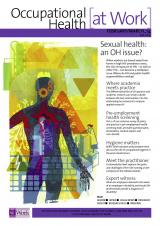February/March 2014 (vol. 10/5)
ContentsFeaturesNewsLegal
NewsResearch DigestResearch PlusCPD
Research Plus
Back pain absence variability
A systematic review (45 included papers) and meta-analysis (34 papers) of research evidence on low-back pain and sickness absence in different working populations and settings finds that around one in three (32%) affected workers remain absent after one month, but that the ratio falls to one in 14 (7%) after six months. Methodological differences between the various studies are important in explaining much of the variation in reported return-to-work (RTW) outcomes. Notably, participation bias (a measure of how representative the studies are of the actual populations under investigation) is significantly associated with the pooled RTW estimate. For example, studies with a low risk of bias had a pooled estimate of 59% RTW (CI 46%–70%) after one month, whereas those with a moderate risk of bias had a pooled estimate of 90% RTW at one month (CI 57%–98%). Methods of data collection and study setting also explain some of the variation, with higher RTW rates found in studies using electronic compared to self-reported data.
Occupational Health at Work February/March 2014 (vol. 10/5) pp40



